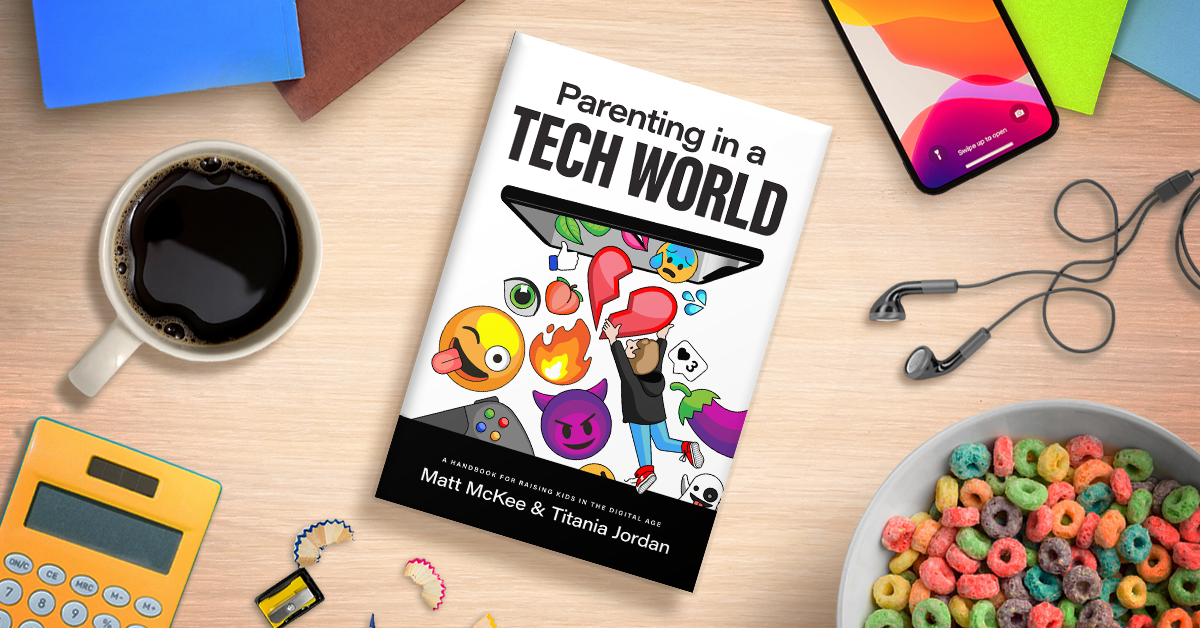
Parenting in a Tech World: Navigating the Digital Landscape with Your Children
Raising children in the 21st century presents unique challenges and opportunities. We are now parenting in a tech world, where smartphones, tablets, and computers are ubiquitous. The digital landscape is constantly evolving, requiring parents to adapt and learn how to guide their children safely and effectively through this technological maze. This article explores the complexities of parenting in a tech world, offering practical advice and strategies to help you navigate the digital landscape with your children.
Understanding the Digital Landscape
Before diving into specific strategies, it’s crucial to understand the current digital environment. Children today are digital natives, meaning they’ve grown up surrounded by technology. They often possess an intuitive understanding of devices and platforms that can sometimes surpass their parents’ knowledge. This can lead to a power imbalance where children may feel they know more than their parents about online safety and responsible digital citizenship.
Key aspects of the digital landscape include:
- Social Media: Platforms like TikTok, Instagram, and Snapchat are integral to many children’s social lives. They use these platforms to connect with friends, share experiences, and express themselves. However, these platforms also pose risks such as cyberbullying, privacy concerns, and exposure to inappropriate content.
- Online Gaming: Video games offer entertainment, social interaction, and even educational opportunities. However, they can also be addictive, expose children to violent or inappropriate content, and lead to online interactions with strangers.
- Educational Resources: The internet provides access to a wealth of educational resources, from online courses to interactive learning tools. These resources can supplement traditional education and help children develop new skills.
- Streaming Services: Platforms like Netflix, Hulu, and Disney+ offer a vast library of movies and TV shows. While these services can be entertaining, it’s important to monitor what children are watching and ensure it’s age-appropriate.
Setting Boundaries and Establishing Rules
Establishing clear boundaries and rules is essential for healthy parenting in a tech world. Children need guidance and structure to navigate the digital landscape safely and responsibly. Consider the following guidelines:
Screen Time Limits
Excessive screen time can negatively impact children’s physical and mental health. It can contribute to sleep problems, eye strain, obesity, and attention deficits. The American Academy of Pediatrics recommends limiting screen time for children aged 2-5 to one hour per day of high-quality programming. For older children, it’s important to set reasonable limits and encourage a balance between screen time and other activities.
Device-Free Zones and Times
Designate certain areas and times as device-free zones. For example, the dinner table and bedrooms should be screen-free zones. Similarly, establish device-free times, such as during family meals or before bedtime. This encourages face-to-face interaction and promotes healthy sleep habits. Practicing mindful parenting is key to setting appropriate boundaries.
Content Restrictions and Parental Controls
Utilize parental control tools to restrict access to inappropriate content. Most devices and platforms offer built-in parental control features that allow you to filter content, set time limits, and monitor your child’s online activity. Explore these options and customize them to suit your family’s needs. Regularly review and adjust these settings as your child grows and their needs change. Parenting in a tech world means staying updated on the latest features and security measures.
Open Communication and Trust
Foster open communication with your children about their online experiences. Encourage them to come to you if they encounter anything that makes them feel uncomfortable or unsafe. Build a relationship of trust where they feel comfortable sharing their concerns without fear of judgment. This is a cornerstone of effective parenting in a tech world. [See also: Building Trust with Your Teenager]
Promoting Digital Literacy and Online Safety
In addition to setting boundaries, it’s crucial to educate children about digital literacy and online safety. They need to understand how to use technology responsibly and protect themselves from online risks.
Teaching Critical Thinking Skills
Help children develop critical thinking skills to evaluate the information they encounter online. Teach them to question the source of information, look for evidence, and consider different perspectives. Explain the difference between reliable and unreliable sources and encourage them to be skeptical of information that seems too good to be true.
Cyberbullying Prevention
Educate children about cyberbullying and its potential consequences. Teach them how to recognize cyberbullying, respond appropriately, and report incidents to a trusted adult. Emphasize the importance of empathy and kindness online and encourage them to stand up for others who are being bullied. Parenting in a tech world involves actively combating cyberbullying.
Privacy and Data Security
Explain the importance of protecting personal information online. Teach children not to share their name, address, phone number, or other sensitive information with strangers. Discuss the risks of posting personal information on social media and encourage them to be mindful of their digital footprint. Show them how to use privacy settings on social media platforms to control who can see their posts and information.
Online Scams and Phishing
Warn children about online scams and phishing attempts. Explain that scammers often try to trick people into giving them personal information or money. Teach them to be wary of suspicious emails, messages, or websites and to never click on links from unknown sources. Encourage them to report any suspicious activity to you or another trusted adult. Parenting in a tech world requires vigilance against online threats.
Modeling Responsible Digital Behavior
Children learn by example, so it’s important for parents to model responsible digital behavior. Be mindful of your own screen time habits and demonstrate healthy technology use. Show children how to use technology productively and responsibly. [See also: Setting a Good Example for Your Children]
Lead by Example
Put away your phone during family time and be present with your children. Show them that you value face-to-face interaction and that technology is not the only source of entertainment or connection. Avoid excessive social media use and be mindful of the content you share online. Demonstrate responsible online behavior and show your children that you practice what you preach. This is crucial for effective parenting in a tech world.
Engage in Digital Activities Together
Participate in digital activities with your children. Play video games together, watch movies, or explore educational websites. This allows you to bond with your children while also monitoring their online activity and providing guidance. It also shows them that you are interested in their digital world and that you value their interests. Parenting in a tech world can be fun and engaging when you participate alongside your children.
Discuss Digital Dilemmas
Use real-life examples to discuss digital dilemmas and ethical considerations. Talk about the impact of online behavior on others and the importance of making responsible choices. Discuss topics such as online privacy, cyberbullying, and digital citizenship. This helps children develop a strong moral compass and make informed decisions in the digital world. Parenting in a tech world requires open and honest conversations about ethical considerations.
Leveraging Technology for Learning and Development
While technology poses challenges, it also offers numerous opportunities for learning and development. Encourage children to use technology in productive and creative ways. Parenting in a tech world can involve embracing the educational potential of digital tools.
Educational Apps and Websites
Explore educational apps and websites that can supplement traditional learning. Many apps and websites offer interactive lessons, games, and activities that can help children develop new skills and knowledge. Look for apps and websites that are age-appropriate, engaging, and aligned with your child’s interests. Consider using apps that focus on subjects like math, science, language arts, and coding.
Creative Tools and Platforms
Encourage children to use creative tools and platforms to express themselves and develop their talents. There are many apps and websites that allow children to create art, music, videos, and other digital content. These tools can help children develop their creativity, problem-solving skills, and communication skills. Parenting in a tech world involves fostering creativity and innovation through digital tools.
Online Courses and Tutorials
Explore online courses and tutorials that can help children learn new skills and pursue their interests. Many platforms offer courses on a wide range of topics, from coding and design to music and art. These courses can provide children with valuable skills and knowledge that can benefit them in school and beyond. Parenting in a tech world means providing access to online learning opportunities.
Staying Informed and Adapting
The digital landscape is constantly evolving, so it’s important for parents to stay informed and adapt their strategies as needed. Keep up with the latest trends, technologies, and online safety concerns. Parenting in a tech world requires continuous learning and adaptation.
Follow Technology News and Blogs
Subscribe to technology news and blogs to stay up-to-date on the latest trends and developments. Read articles about online safety, digital literacy, and responsible technology use. This will help you stay informed about the challenges and opportunities of parenting in a tech world.
Attend Workshops and Seminars
Attend workshops and seminars on parenting in the digital age. These events can provide valuable insights, tips, and strategies for navigating the digital landscape with your children. They can also connect you with other parents who are facing similar challenges. Parenting in a tech world benefits from community support and shared knowledge.
Talk to Other Parents
Connect with other parents and share your experiences and insights. Talk about the challenges and successes you’ve had with parenting in a tech world. Learn from each other and support each other in navigating the digital landscape with your children. Parenting in a tech world is easier when you have a supportive network of fellow parents.
Conclusion
Parenting in a tech world presents unique challenges, but also offers incredible opportunities. By setting boundaries, promoting digital literacy, modeling responsible behavior, and leveraging technology for learning, you can help your children navigate the digital landscape safely and successfully. Remember to stay informed, adapt your strategies, and foster open communication with your children. With the right approach, you can empower your children to become responsible, ethical, and successful digital citizens. Effective parenting in a tech world is an ongoing journey that requires patience, understanding, and a willingness to learn and adapt. The key is to embrace technology as a tool for learning and growth while also protecting your children from its potential risks. By doing so, you can help them thrive in the digital age.

